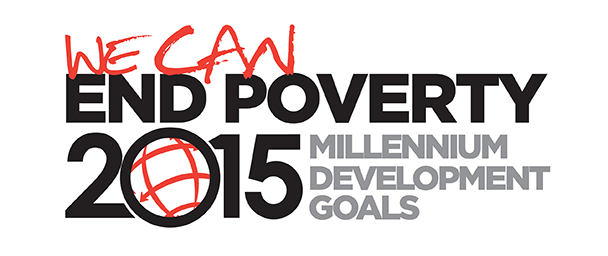
With 2013 coming to a close, many of us are reflecting on the last 12 months and perhaps even creating some new year's resolutions as we look forward to 2014. For some lenders, this coming year might be a chance to make plans with old friends, learn a foreign language, or read a book they never got around to. But did you know that by lending through Kiva you're also contributing to the goals set by world leaders? As part of a new blog series, we’ll be taking a look at the United Nations’ Millenium Development Goals and examine how Kiva loans contribute to addressing these targets.
The Millenium Development Goals (MDGs) emerged in 2000 as a way to address poverty and inequality amongst nations by 2015. The eight internationally-agreed upon goals are a reflection of the most critical areas for human progress: poverty and hunger, universal primary education, gender equality and empowerment, child mortality, maternal health, disease eradication and control, environmental sustainability, and global partnership development.
Eradicating extreme poverty and hunger
The first of the eight goals is perhaps the most challenging to accomplish: eradicate extreme poverty and hunger. But what constitutes “extreme poverty?” The UN defines it as a “condition characterised by severe deprivation of basic human needs, including food, safe drinking water, sanitation facilities, health, shelter, education and information. It depends not only on income but also on access to services.”
Our Field Partners target poverty in a number of different ways, such as geographic locations like rural villages or urban slums where the population is poorer than the surrounding areas. Others might utilize poverty assessment tools with each new borrower, or offer products and services in a manner that attracts poorer borrowers (small loan sizes, uncollateralized loans, and solidarity groups). And while all of our partners are working toward the shared goal of alleviating poverty, we want to highlight a few here that are specifically addressing extreme poverty and access to basic human needs.
One such partner that excels in this area is BRAC. Recently, their Pakistan branch implemented a program to target the ultra poor with funds from the Pakistan Poverty Alleviation Fund. The two-year program reached out to 1,500 beneficiaries with interventions like cash stipends, asset transfers, enterprise development training, social development, and essential health care services. These beneficiaries received economic, social and health support for a full 2-year cycle.
We also have many Field Partners addressing access to basic human needs. Consider Evidence Action, a leader in scaling development solutions that are backed by proven data. One of the flagship programs funded by Kiva lenders is Dispensers for Safe Water, which dramatically expands access to clean water through chlorine dispensers. Globally, more than 1 billion people lack access to safe drinking water, and nearly 2 million people a year die from diarrhea -- 90% of which is attributed to unsafe drinking water and inadequate sanitation. But this year, the chlorine dispensers from Evidence Action provided approximately 600,000 people with access, preventing an estimated 750,000 episodes of diarrhea and saving more than 700 lives.
In a similar field, Kiva’s Field Partner Sanergy works to address extreme poverty and access to basic human needs through sanitation facilities. An estimated 2.6 billion people lack access to safe sanitation, which is especially prevalent in slums. In Kenya alone, about 80% of these residents lack adequate sanitation facilities. Sanergy’s work addresses extreme poverty by providing clean toilet facilities and creating jobs for local entrepreneurs. Since becoming a Kiva Field Partner last year, Sanergy has provided over 100 toilets through Kiva loans. Each of those “Fresh Life” toilets creates about $1200 a year in revenue for entrepreneurs that operate the facilities in addition to the immense impact on a community’s safety and wellness.
Progress report
With a 2015 deadline approaching, there’s some good news to report about the Millennium Development Goal to eradicate extreme poverty and hunger. The first target within this goal -- halving the proportion of people whose income is less than $1.25 a day from 1990 -- has already been met.
That’s a reflection of the strong international efforts to reduce poverty, such as creating development projects in impoverished regions through the United Nation’s Development Programme. Projects that include everything from helping smallholder farmers affected by flash floods in Malawi, to supporting the Mahatma Gandhi National Rural Employment Program, which guarantees the right to a minimum of 100 days of paid work a year for landless laborers and marginal farms.
But with 1.2 billion people still living in extreme poverty, and 1 in 8 people remaining hungry, there’s still a lot of work to be done. Through Kiva loans, each of you are helping address poverty issues such as hunger, sanitation, employment, shelter, and education. Issues that stretch far beyond our own borders. In the words of the UN’s Millennium Declaration, “we have a collective responsibility to uphold the principles of human dignity, equality and equity at the global level.”
We look forward to exploring more of these goals in the weeks to come.














